ECO Zones of India
ECO Zones of India
Bio-geographic Zones
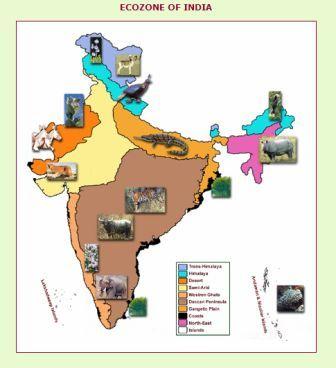
The Trans-Himalayan Region
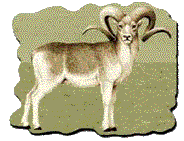 This area is very cold and arid.
This area is very cold and arid.- The only vegetation is a sparse alpine steppe.
- Extensive areas consist of bare rock and glaciers.
- The faunal groups best represented here are wild sheep and goats (chief ancestral stock), ibex, snow leopard, marbled cat, marmots and black-necked crane.
The Himalayan Region
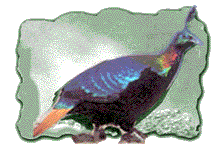 The fantastic altitude gradient results in the tremendous biodiversity of the Himalayan region.
The fantastic altitude gradient results in the tremendous biodiversity of the Himalayan region.- Flora and fauna vary according to both altitude and climatic conditions: tropical rainforests in the Eastern Himalayas and dense subtropical and alpine forests in the Central and Western Himalayas.
- The lower levels of the mountain range support many types of orchids. On the eastern slopes, rhododendrons grow to tree height.
- Animals of Himalayas show several behavioural and physiological adaptations. Sambar and muntjac are found in the subtropical foothills; Serow, goral and the Himalayan thar are found in the temperate and subalpine regions; snow leopard and brown bear inhabit the alpine region. Carnivores are the most elusive of all mammals in the Himalayas. There are a variety of carnivores in the higher mountains, some of which are rare and threatened with extinction.
The Indian Desert
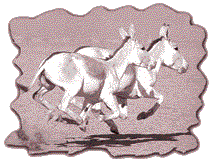 The natural vegetation consists of tropical thorn forests and tropical dry deciduous forests, sandy deserts with seasonal salt marshes and mangroves are found in the main estuaries. Typical shrubs are phog growing on sand dunes. Sewan grass covers extensive areas called pali.
The natural vegetation consists of tropical thorn forests and tropical dry deciduous forests, sandy deserts with seasonal salt marshes and mangroves are found in the main estuaries. Typical shrubs are phog growing on sand dunes. Sewan grass covers extensive areas called pali.
Thar desert possesses most of the major insect species. 43 reptile species and moderate bird endemism are found here. No niche of the Thar is devoid of birds. The black buck was once the dominant mammal of the desert region, now confined only to certain pockets. The gazelle is the only species of the Indian antelope of which the females have horns. Nilgai the largest antelope of India and the wild ass, a distinct subspecies, is now confined to the Rann of Kutch which is also the only breeding site in the Indian subcontinent for the flamingoes. Other species like desert fox, great Indian bustard, chinkara and desert cat are also found.
The Semi-Arid Region
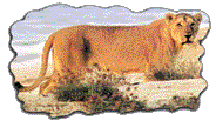 The semi-arid region in the west of India includes the arid desert areas of Thar and Rajasthan extending to the Gulf of Kutch and Cambay and the whole Kathiawar peninsula.
The semi-arid region in the west of India includes the arid desert areas of Thar and Rajasthan extending to the Gulf of Kutch and Cambay and the whole Kathiawar peninsula.
The natural vegetation consists of tropical thorn forests and tropical dry deciduous forests, moisture forests (extreme north) and mangroves. The sandy plains have a few scattered trees of Acacia and Prosopis. The gravelly plains have Calotropis, Gymnosporia, etc. The rocky habitats are covered by bushes of Euphorbia while species of Salvadora and Tamarix occur mainly near saline depressions.
The lion of Gir is the endemic species in this zone.
The Western Ghats
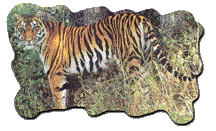 They cover only 5% of India's land surface but are home to more than about 4,000 of the country's plant species of which 1800 are endemic. The monsoon forests occur both on the western margins of the ghats and on the eastern side where there is less rainfall. This zone displays diversity of forests from evergreen to dry deciduous.
They cover only 5% of India's land surface but are home to more than about 4,000 of the country's plant species of which 1800 are endemic. The monsoon forests occur both on the western margins of the ghats and on the eastern side where there is less rainfall. This zone displays diversity of forests from evergreen to dry deciduous.
The Nilgiri langur, lion tailed macaque, Nilgiri tahr, Malabar grey hornbill and Most amphibian species are endemic to the Western Ghats.
The Deccan Peninsula
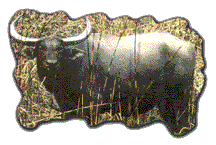 The Deccan Peninsula is a large area of raised land covering about 43% of India's total land surface. It is bound by the Sathpura range on the north, Western Ghats on the west and Eastern Ghats on the east. The elevation of the plateau varies from 900 mts. in the west to 300 mts. in the east. There are four major rivers that support the wetlands of this region which have fertile black and red soil. Large parts are covered by tropical forests. Tropical dry deciduous forests occur in the northern, central and southern part of the plateau. The eastern part of the plateau in Andhra Pradesh, Madhya Pradesh and Orissa has moist deciduous forests.
The Deccan Peninsula is a large area of raised land covering about 43% of India's total land surface. It is bound by the Sathpura range on the north, Western Ghats on the west and Eastern Ghats on the east. The elevation of the plateau varies from 900 mts. in the west to 300 mts. in the east. There are four major rivers that support the wetlands of this region which have fertile black and red soil. Large parts are covered by tropical forests. Tropical dry deciduous forests occur in the northern, central and southern part of the plateau. The eastern part of the plateau in Andhra Pradesh, Madhya Pradesh and Orissa has moist deciduous forests.
Fauna like tiger, sloth bear, wild boar, gaur, sambar and chital are found throughout the zone along with small relict populations of wild buffaloes, elephants and barasingha.
The Gangetic Plain
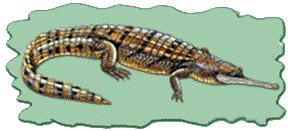 The Gangetic plain is one of India's most fertile regions. The soil of this region is formed by the alluvial deposits of the Ganges and its tributaries. The four important surface differences recognized in the geomorphology of the plains are
The Gangetic plain is one of India's most fertile regions. The soil of this region is formed by the alluvial deposits of the Ganges and its tributaries. The four important surface differences recognized in the geomorphology of the plains are
- Bhabar - pebble studded zone with porous beds
- Terai - marshy tract
- Bhangar - older alluvium of the flood plain
- Terai - marshy tract
- Khadar -newer alluvium
The Gangetic plains stretching from eastern Rajasthan through Uttar Pradesh to Bihar and West Bengal are mostly under agriculture. The large forest area is under tropical dry deciduous forest and the southeastern end of the Gangetic plain merges with the littoral and mangroves regions of the Sunderbans.
The fauna includes elephants, black buck, gazelle, rhinoceros, Bengal florican, crocodile, freshwater turtle and a dense waterfowl community.
The Coastal Region
The natural vegetation consists of mangroves. Animal species include dugong, dolphins, crocodiles and avifauna. There are 26 species of fresh water turtles and tortoises in India and 5 species of marine turtles, which inhabit and feed in coastal waters and lay their eggs on suitable beaches. Tortoise live and breed mainly on the land.
Over 200,000 Olive Ridley turtles come to Odisha to nest in the space of three or four nights. The highest tiger population is found in the Sunderbans along the east coast adjoining the Bay of Bengal.
Lakshadweep consists of 36 major islands - 12 atolls, 3 reefs and 5 submerged coral banks - make up this group of islands more than three hundred kilometers to the west of the Kerala coast. The geographical area is 32 sq. km. and the usable land area is 26.32 sq. km. The fauna consists mainly of four species of turtles, 36 species of crabs, 12 bivalves, 41 species of sponges including typical coral, ornamental fishes and dugongs. A total of 104 scleractinian corals belonging to 37 genera are reported.
The North-East
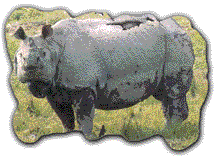 Biological resources are rich in this zone. The tropical vegetation of northeast India is rich in evergreen and semievergreen rain forests, moist deciduous monsoon forests, swamps and grasslands.
Biological resources are rich in this zone. The tropical vegetation of northeast India is rich in evergreen and semievergreen rain forests, moist deciduous monsoon forests, swamps and grasslands.
Mammalian fauna includes 390 species of which 63% are found in Assam. The area is rich in smaller carnivores. The country's highest population of elephants are found here.
The Indian Islands
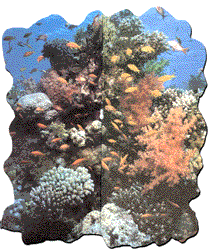 It is a group of 325 islands: Andaman to the north and Nicobar to the south. The two are separated by about 160 kms. by the Ten Degree Channel of the sea. The rainfall is heavy, with both Northeast and Southwest monsoons. The Andaman & Nicobar Islands are inhabited many unique plants and animals are found here. About 2,200 species of higher plants are found here of which 200 are endemic. The Andaman & Nicobar Islands have tropical evergreen forests and tropical semievergreen forests as well as moist deciduous forests, littoral and mangrove forests.
It is a group of 325 islands: Andaman to the north and Nicobar to the south. The two are separated by about 160 kms. by the Ten Degree Channel of the sea. The rainfall is heavy, with both Northeast and Southwest monsoons. The Andaman & Nicobar Islands are inhabited many unique plants and animals are found here. About 2,200 species of higher plants are found here of which 200 are endemic. The Andaman & Nicobar Islands have tropical evergreen forests and tropical semievergreen forests as well as moist deciduous forests, littoral and mangrove forests.
112 endemic species of avifauna, the Andaman water monitor, giant robber crab, 4 species of turtles, wild boar, Andaman day gecko and the harmless Andaman water snake are found only in these islands. The Narcondam hornbill found only in Narcondam is a large forest bird with a big beak.
Causes of Ecological Destruction and Depletion
The rapid deterioration of the ecology due to human interference is aiding the disappearance of wildlife from the biosphere.
The common problems are habitat disturbance and destruction, introduction of exotics, exploitation, marine pollution, natural disasters like floods, earthquakes and forest fires.
The major problems of certain specific zones are as follows.
- Wetlands: siltation, eutrophication, encroachment, tourism.
- Forests: deforestation and degradation, extended cultivation, road laying, mining operation.
- Seas: hot water from nuclear and thermal power plants, toxic effluents from coastal areas, oil spills, blasting and dredging, collection of undersized fishes and other organisms, exploitation of ornamental seashells, chanks and pearl oysters by domestic shell craft industry, export of sea fans and seaweeds.
- Corals: used as a raw material in the cement factories, exploitation of antipatharians and precious red coral for jewellery, commercial exploitation of aquarium fishes from Indian coral reefs.
- Mangroves: agriculture, aquaculture, fuel wood extraction, diversion of fresh water for irrigation resulting in increased salinity.
- Rivers: heavy metal pollution, persistent biocides, organic wastes, removal of sand from river beds.
- Animals: exploited for their skin, fur, wood, tusk, meat, medicine and oil, trade, hunting, poaching.
Ecosystem Balance
There is an urgent need for sustaining wild species due to the following reasons.
- Forests render the climate more equable, prevent soil erosion and landslides and help in flood control
- Most of today's food crops were domesticated from wild tropical plant
- About 80% of the world’s population relies on plants or plant extracts for medicines
- Pollination and seed dispersal by birds, insects and animals is essential to increase diversity of genetic recombination
- Agricultural scientists and genetic engineers require the existing total stock of species - most of them still unknown and unnamed - as the source of food and to develop the new crop strains of tomorrow
- Survival of humans and other species is dependent on the producer
- Wildlife serves as a gene library; premature extinction of species leads to irreversible loss of genetic information that influences the future evolution of life on earth Aesthetic value
Biodiversity and ecological integrity are essential to all life on earth and should not be disturbed by human actions. To save the natural world, ecosystems as a whole have to be saved. Unless the entire ecosystem is preserved, the individual species will not be able to survive for long.
The steps taken to preserve our wildlife are:
- Gene banks and Botanical Gardens
- Zoological Gardens and Captive Breeding Centres
- Biosphere Reserves
- National Parks and Wildlife Sanctuaries
- Treaties and laws to protect endangered species
Last Modified : 2/14/2023
